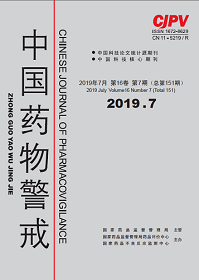|
|
Literature Review of 157 Cases of Adverse Drug Reactions Induced by Irinotecan
MO Beilei, WANG Tao, YUAN Heng
2019, 16(7):
430-435.
Objective To explore the characteristics and regularity of adverse reactions of irinotecan, so as to provide reference for preventing adverse reactions and rational clinical use. Methods Using "irinotecan"、"campto"、"adverse reaction"and "to"as key words, the articles in the CNKI and Wanfang database from January 2000 to January 2019 were searched and retrieved. Thirty-eight references which met the inclusion and exclusion criteria were extracted and analyzed. Results 157 cases were extracted. There were more middle-aged and elderly patients. The primary diseases were colon cancer, rectal cancer, lung cancer and cervical cancer. Systems and organs mainly involved in adverse reactions were blood, digestion, skin and its appendages, and systemic damage. The main clinical manifestations were myelosuppression, cholinergic syndrome, nausea, diarrhea and other digestive tract reactions. Conclusions trengthen the monitoring and guidance of drug use, pay attention to the quality of clinical nursing, and continuously improve the level of rational drug use.
References |
Related Articles |
Metrics
|
